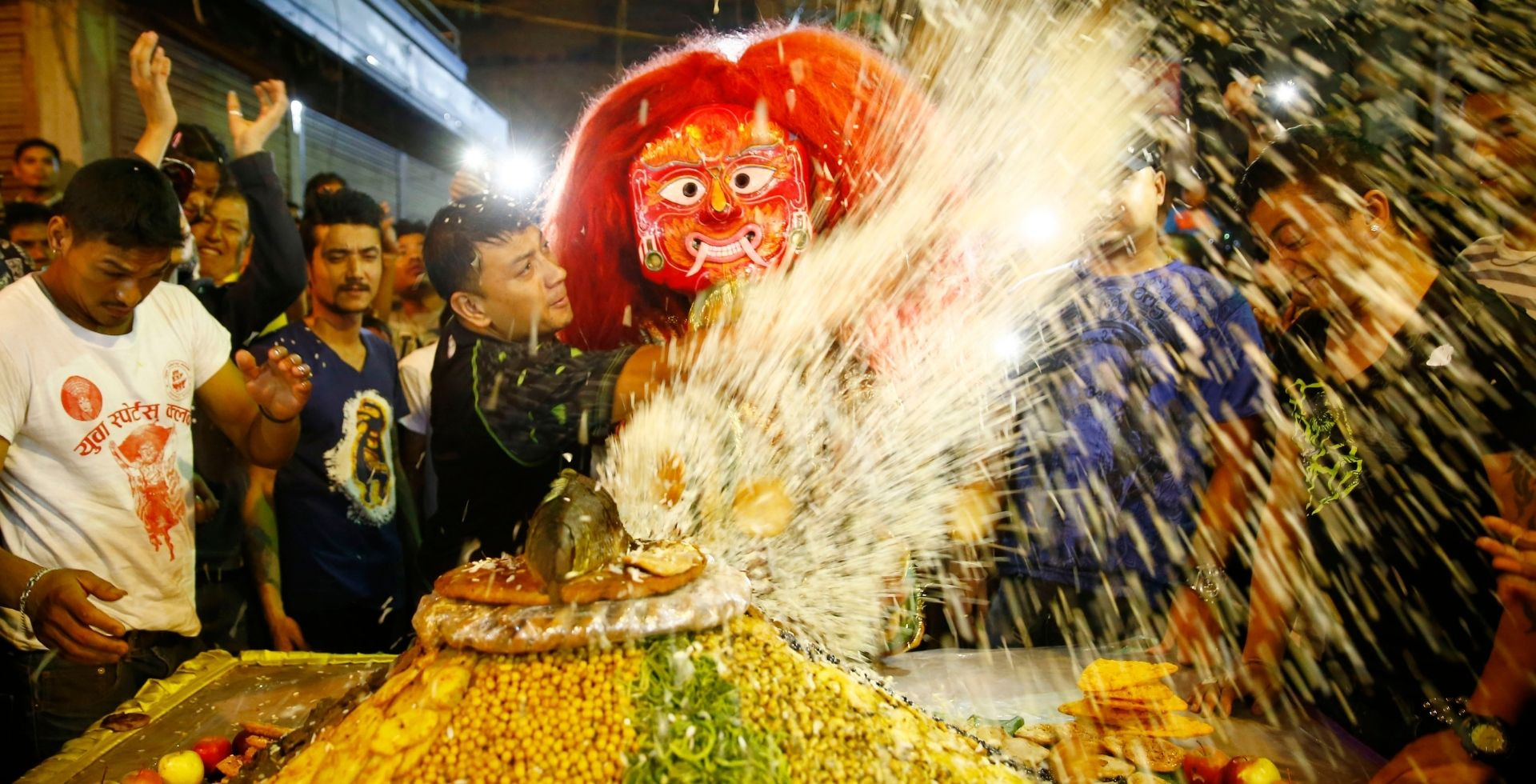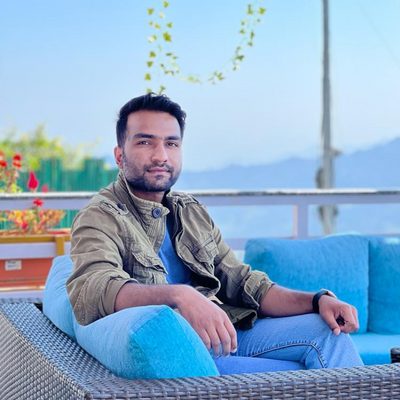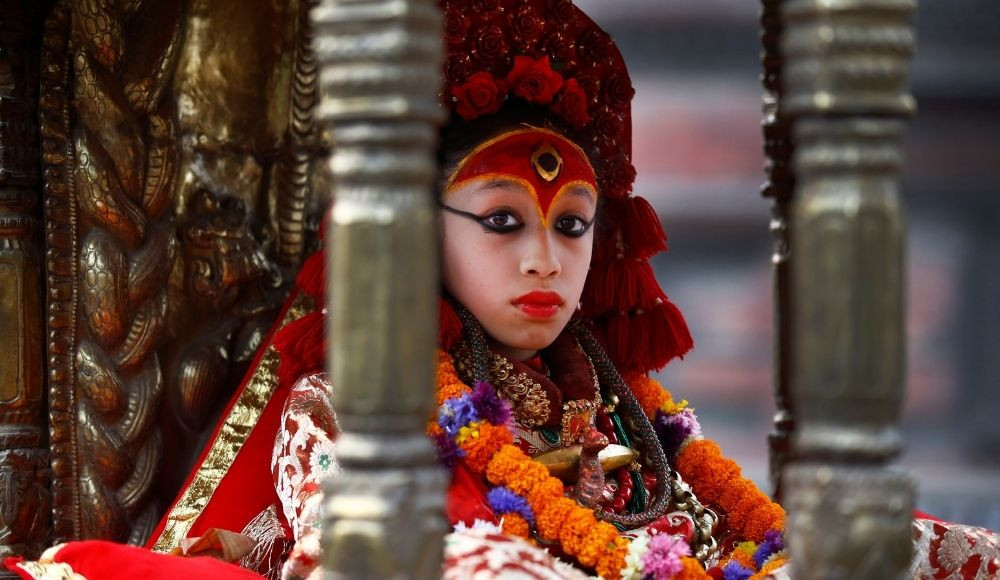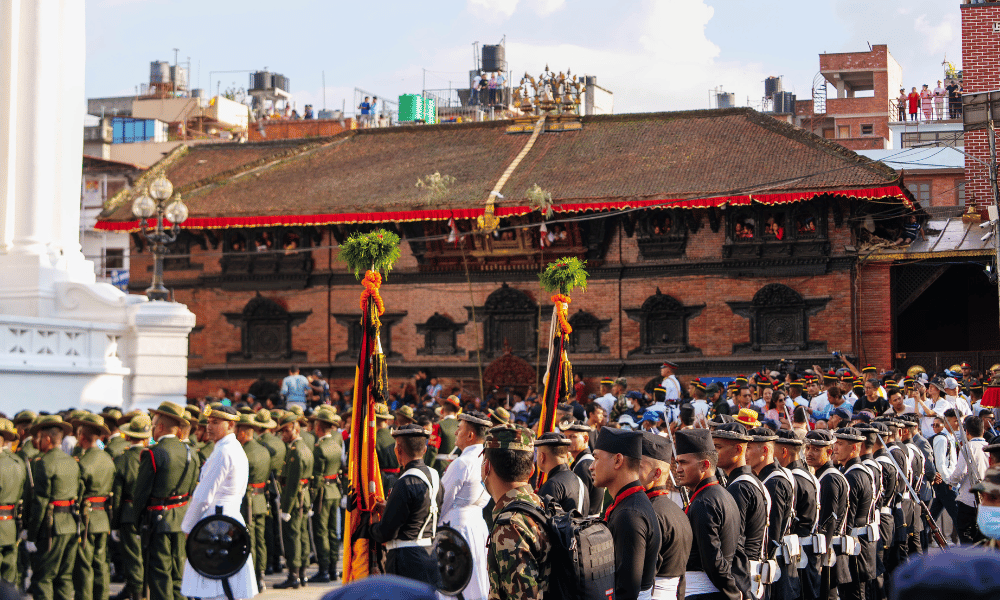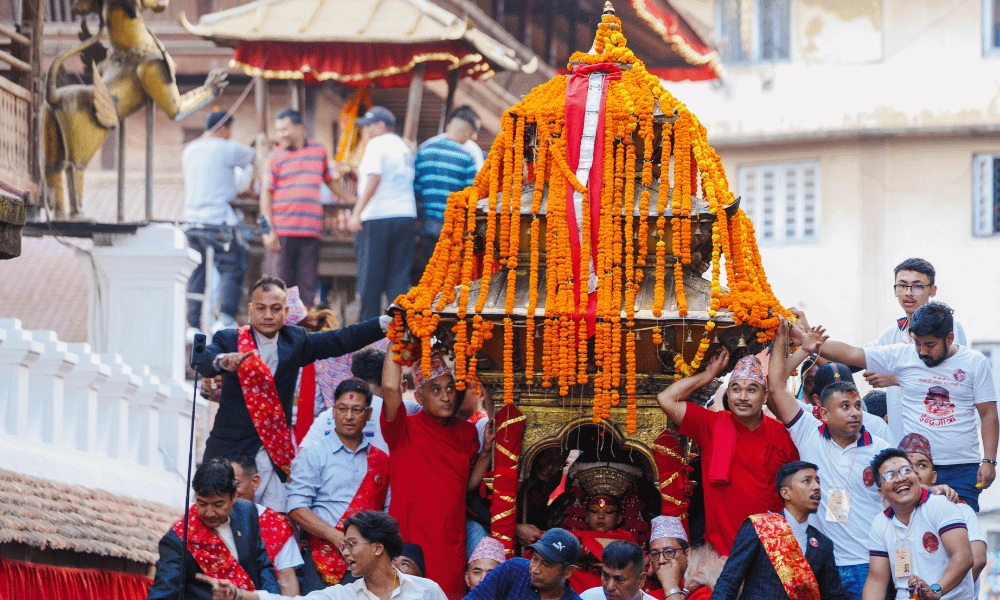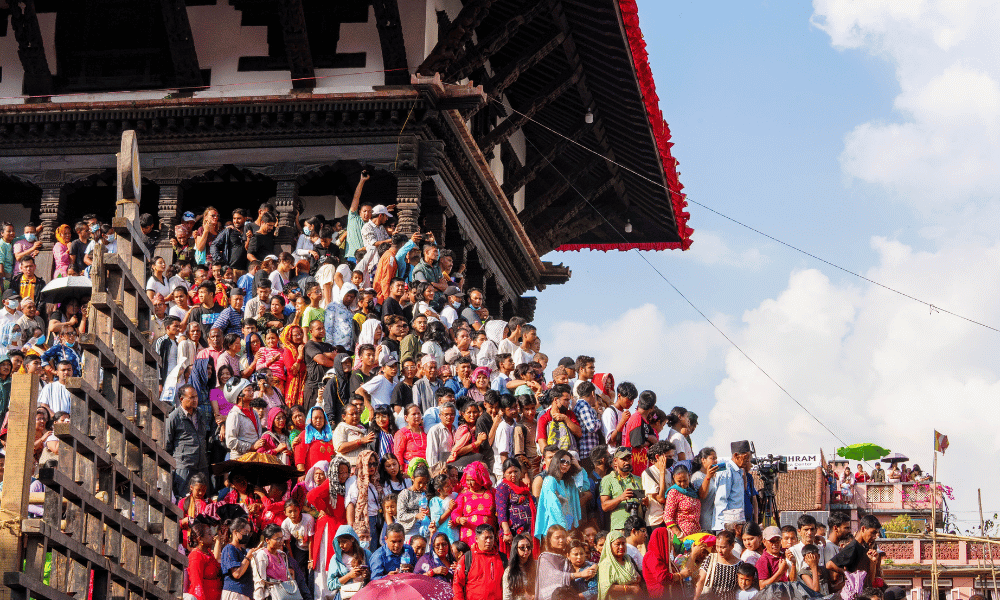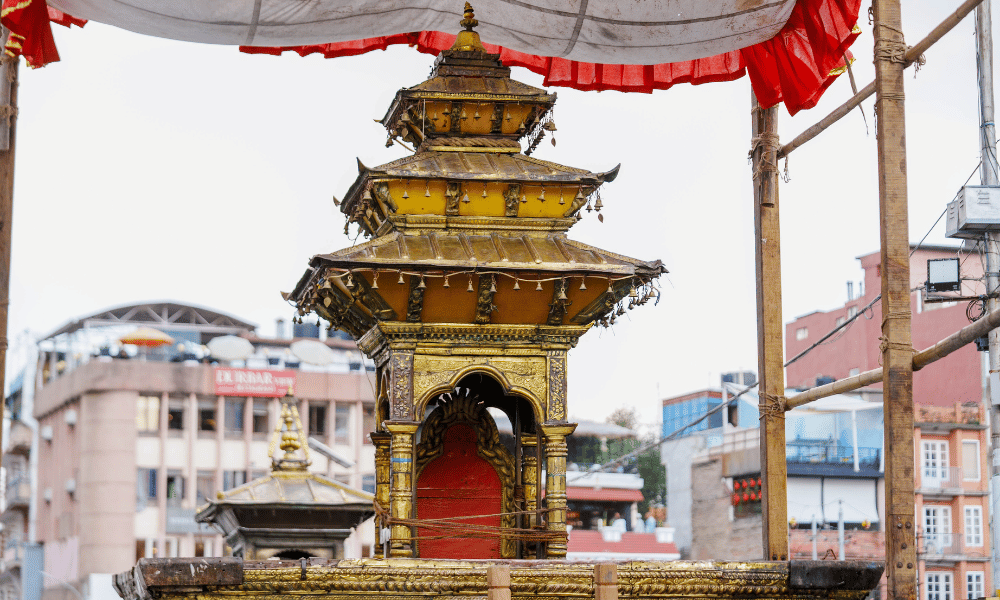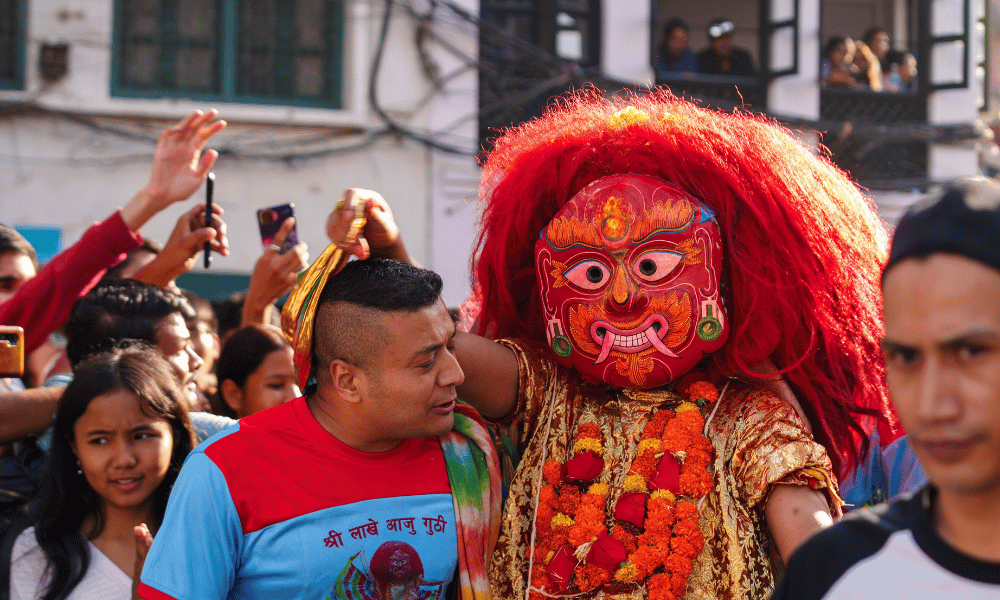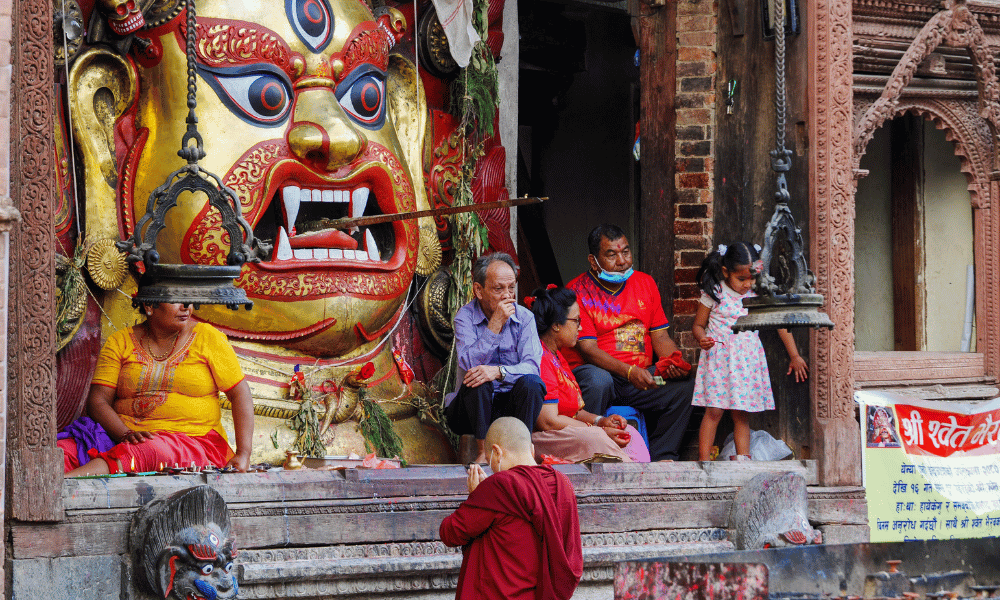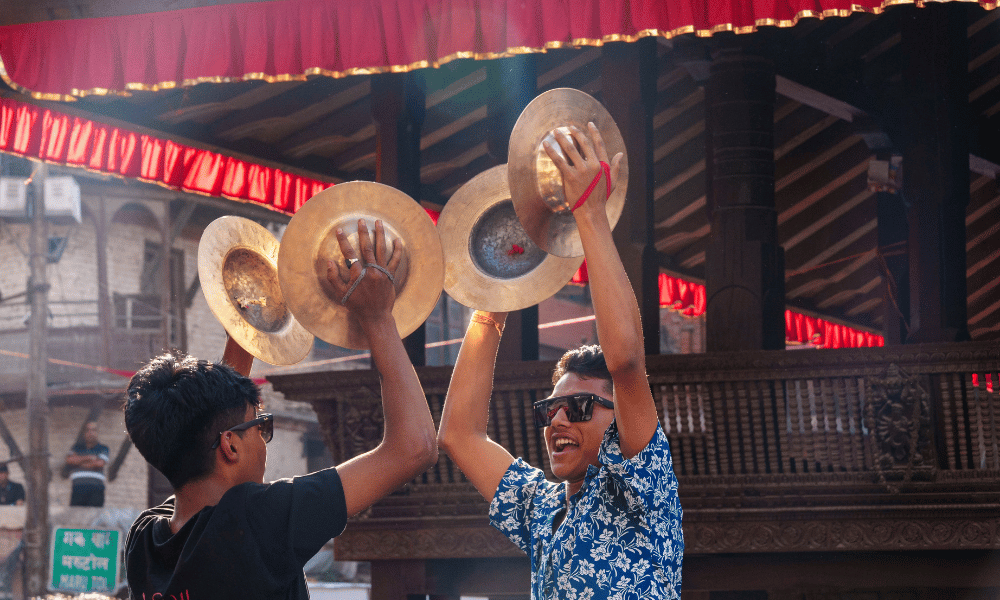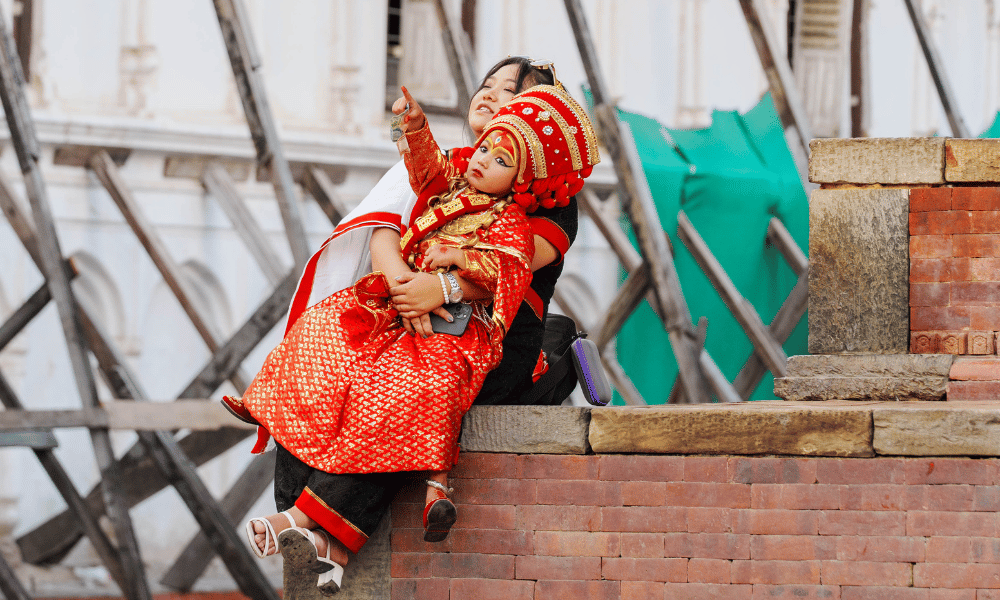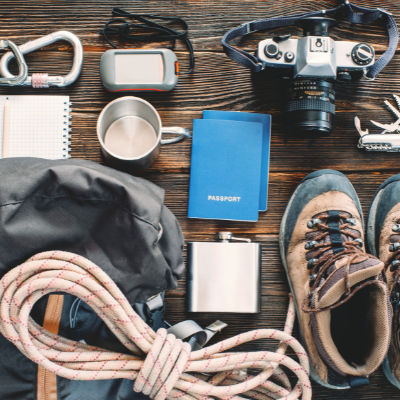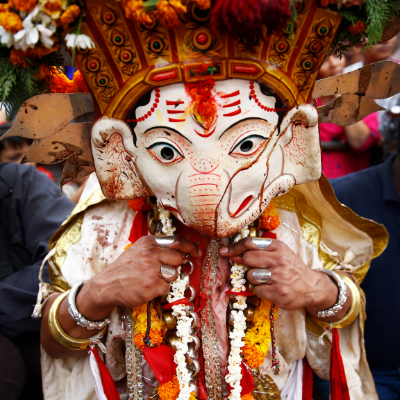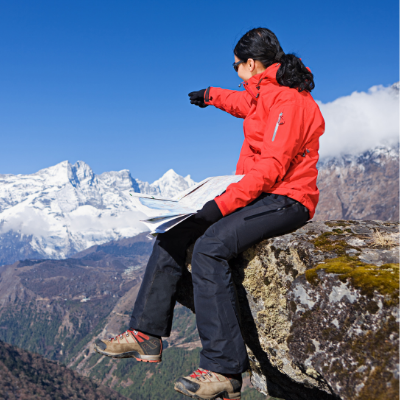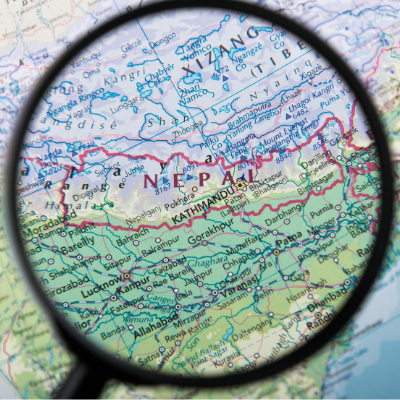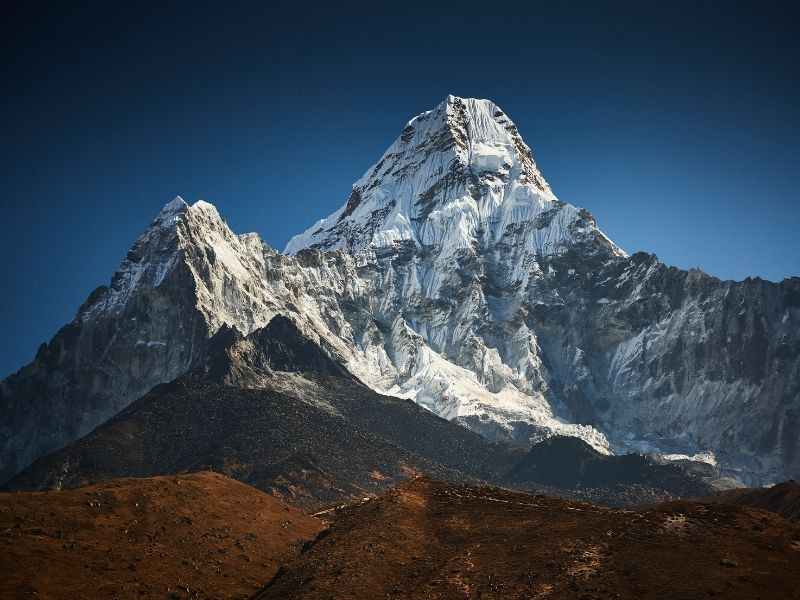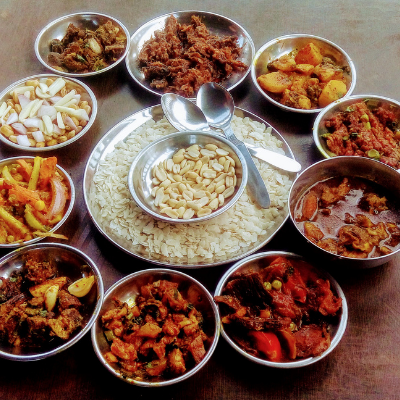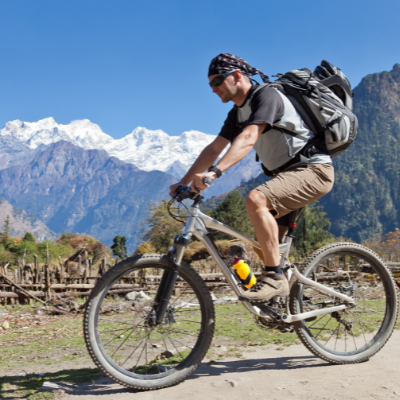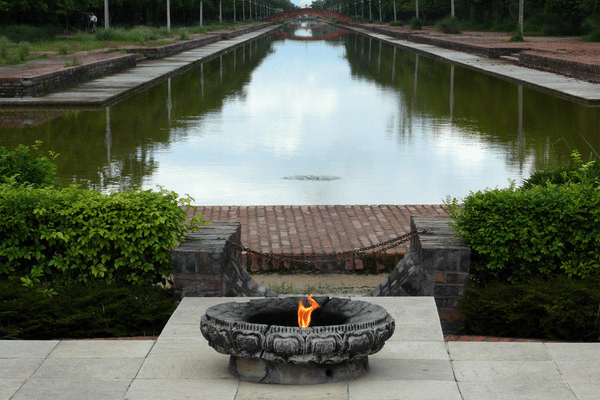The festival starts with Yosin Thanegu, the erection of Yosin or Linga, a pole from which the banner of Indra is unfurled, at Basantapur Durbar Square. The pole is erected by shortening and stripping off tree branches. And it is obtained from the forest of Nala, a small town located 29 km east of Kathmandu Valley. The muscles of hundreds are used to place it on the stage of Durbar Square.
First Day
On the first day of the Indra Jatra, the people would hold a special flag-raising ceremony. This carefully selected pole is 10 meters high and is eventually erected outside Hanuman Dhoka in Kathmandu. At that moment, there will be a big dance party.
A series of legends about Indra and captivated scenes will also be made up of those fun dances. In many temples in the Kathmandu district, buffaloes, goats, fish, nuts, and other objects such as idols and goddesses are worshipped. At the end of the Indra rites, the offerings will be distributed to the crowds. Another event on the first day is Upaku Wanegu, practised in the remembrance of the deceased one’s holding the incense and flowers in their hand.
In Between
The festival is celebrated in three different sequels of rituals: Kumari Jatra, Indra Jatra, and Bhairava Jatra. The celebration includes a flagpole ceremony, blood sacrifice, display of Bhairava masks, etc.
These three sequels have their own ceremonial components but make a grand affair and turn Basantapur Durbar square into a grand ceremonial place filled with people, tantalizing fragrance and tranquil drum beats making a blissful environment.
The sight of the square dazzles from dawn until midnight, the butter lamps enlighten the positive energy as the chariots of Kumari, Ganesh and Bhairava make their way through the inner city of Kathmandu Valley. The street comes to light with traditional instrumental beats, masked dances, and bloomy flowers.
They also place small butter lamps on the way and sing hymns as they make the tour. The circuitous route is taken along the streets of historical parts and areas of the city. This procession starts in the evening around 4 pm.
The chariot festival lasts for three days. The three chariots carrying the human representation of Ganesh, Bhairava, Kumari takes the street around 3 pm in the afternoon. In the first, the chariots are driven around with the muscles of hundred men around the streets and historical places of Kathmandu Valley by pulling ropes.
During the Indra Jatra Festival
The first day is also popular as Kwaneya and the chariot route starts from Basantapur and ends in Basantapur. It makes a circular tour of major parts around. The taken route is Basantapur, Maru, Chikanmugal, Jaisidewal, Lagan, Brahma Marga, Wonde, Hyumata, Kohity, Bhimsensthan, Maru, Basantapur.
This is the most important day of Indra Jatra. The head of state and higher personals come and pay their respect to Kumari, the Living goddess.
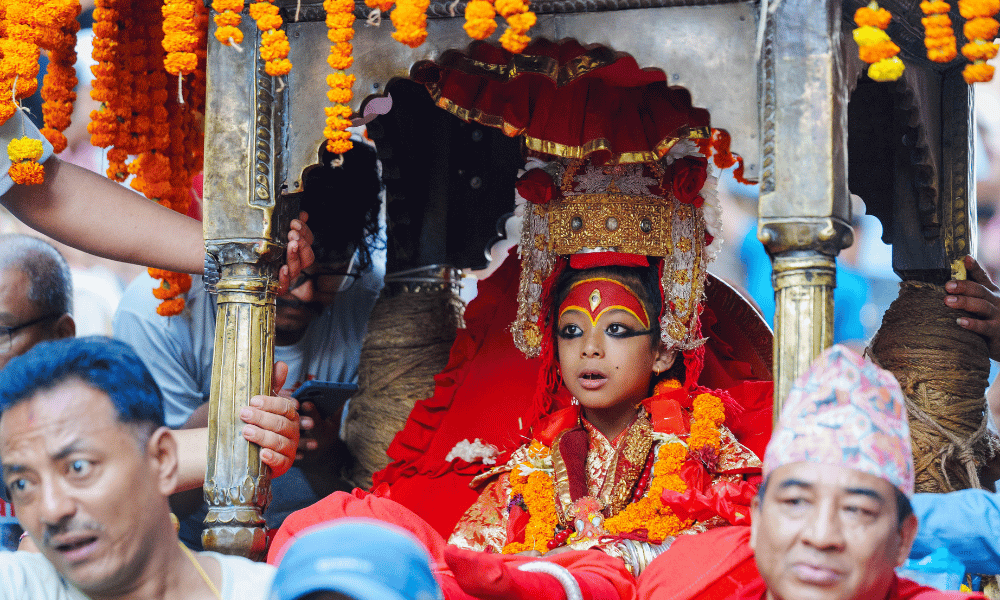
The chariot changes route every day, the second day of chariot pulling also called, Thaneyaa which circles the upper city, following the route of Basantapur, Pyaphal, Nyata, Tengal, Nhyokha, Nhaikan Tol, Asan, Kel Tol, Indra Chowk, Makhan, Basantapur. After the Thaneyaa the festival continues with portrayals performing on the street. Whereas the pulling of the chariots takes place until the last day of Indra Jatra.
One of the major sources of attraction is mask dances, the devotees wear colourful and depicted ferocious masks, projecting fangs along with the thick red and black hair, dance carrying a colourful handkerchief in their hand is a worthwhile scene.



